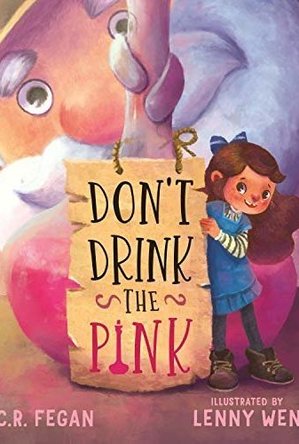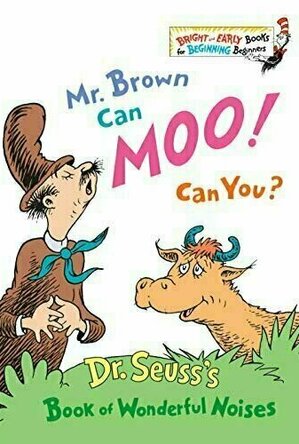
Don't Drink the Pink
Book
Madeline adores her Grandpa Gilderberry – she always has. To everyone else he might seem a bit...
picture book family rhymes rhyming
Mark @ Carstairs Considers (2456 KP) rated Mr. Brown Can Moo! Can You? in Books
Mar 3, 2022
This has all the creativity, humor, and charm of a classic Dr. Seuss book. I loved it as a kid, and I found it just as fun reading it to kids when I was older. Since the sounds are part of the rhythm and rhymes of the book, they call out to be made as you read, so it is most fun if you really get into it. This is classified as an easy reader. Some of the sounds written out might not be familiar words, but it is a chance to challenge young readers in a context they will get. Add in Dr. Seuss’s illustrations, and you have a winner.
Mark @ Carstairs Considers (2456 KP) rated What Pet Should I Get? in Books
Mar 9, 2018
You can tell that Dr. Seuss didn’t think this was his best work and that’s why he gave up on it. The rhymes are almost there, but they aren’t as good as some of his books. Same with the rhythm of the lines. By the time we get to some of Seuss’s trademark imaginary creatures (and there are only two of them), they feel forced into the book. Never mind the fact that we never answer the title question. Fortunately, the illustrations live up to the Seuss name. It’s not a bad book, but it’s not one to rush out and buy, either, which is what I suspected before picking it up.
Read my full review at <a href="http://carstairsconsiders.blogspot.com/2015/07/book-review-what-pet-should-i-get-by-dr.html">Carstairs Considers</a>.
Nicole Hadley (380 KP) rated Rosie the Tarantula: A True Adventure in Chicago’s Field Museum in Books
Jun 14, 2018
I received an ARC from Northwestern University Press via NetGalley in exchange for an honest review.
I give the book 4/5 stars.

Funny Kids Poems
Book and Education
App
***In top-10 the most interesting interactive children's books for iPhone and iPad by Forbes.ru*** ...

On the Come Up
Book
Sixteen-year-old Bri wants to be one of the greatest rappers of all time. Or at least make it out of...

Finding Forrester (2000)
Movie Watch
amal Wallace (Robert Brown) is an inner-city kid from the Bronx who has an aptness at basketball and...
Heather Cranmer (2721 KP) created a post
Feb 2, 2021

Julie's Greenroom
TV Show Watch
In JULIE'S GREENROOM, Miss Julie (Julie Andrews) and her assistant, Gus (Giullian Yao Gioiello),...
musical family

